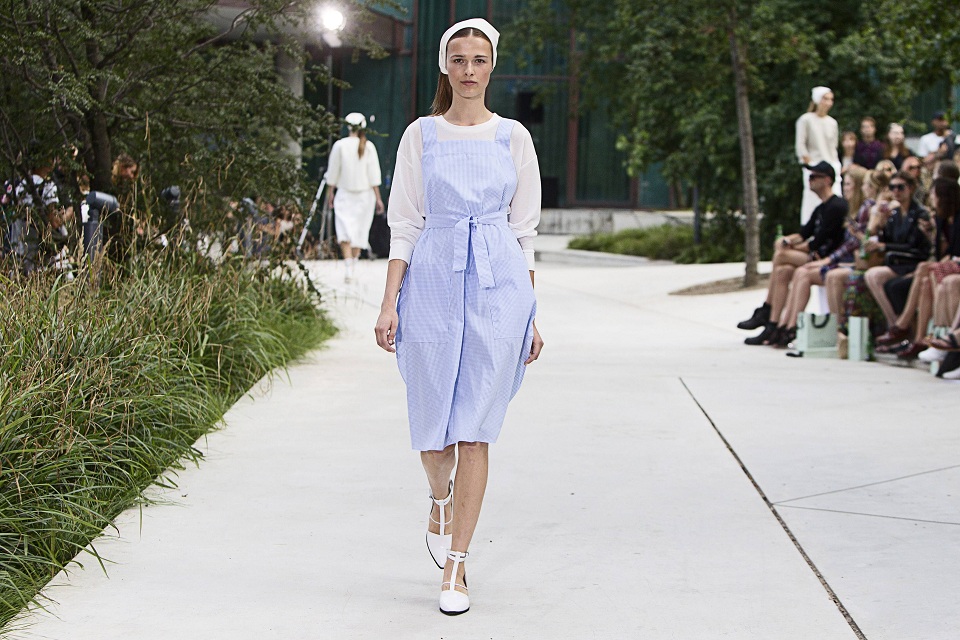Filtered By: Lifestyle
Lifestyle
At Copenhagen Fashion Week, simple designs for austere times

A model presents a creation by Danish Fashion House Designer Remix during the Copenhagen Fashion Week, August 6, 2014. REUTERS/Jonas Skovbjerg Fogh/Scanpix
The shows—featuring female models lounging on seats reading magazines, or men swaggering in gothic kilts and leather jackets—proclaimed a new Danish style that rejects grandeur for simplicity and irreverence.
Growing exports from houses such as Ganni, Acne and Malene Birger together with international acclaim for designers such as Asger Juel Larsen show the growing influence of a pared-back, understated aesthetic.
"It's exotic minimalism. Beautiful simplicity is in their DNA. It is not based around high heels and mini skirts," said buying director Justin O'Shea of Munich-based luxury fashion online store MyTheresa.com.
O'Shea, an Australian, said Copenhagen was one of only a few cities that inspired him. He was drawn to the Nordics not so much for the detail of the designs but a vibe, a casually glamorous lifestyle expressed through clothes.
Danish designer Barbara I Gongini produced models with birds-nest hair and scowling men in black trousers that tapered at the calf, with knee-length jackets covering their shirtless chests. Expressionless women wore asymmetrical, untailored dresses—a ruffled but simple and monochrome look.
For organizers of the fashion week, the aesthetic is fittingly austere for a continent still trying to move on from the financial crisis.
"Through time, economic circumstances have been reflected by the lengths of women's skirts and there is no doubt fashion collections in general have been cautious during the crisis," Copenhagen Fashion Week CEO Eva Kruse told Reuters before the opening show.
The prolonged recessions in many European countries may have created an opportunity for spartan Scandinavian fashions that eschew the sequined glamour of the boom-times.
Denmark's fashion exports have grown by 16 percent since 2009, with much of the demand coming from Germany where sales were 6.1 billion Danish crowns ($1 billion) last year.
For Kruse, the luxury end of the Nordic fashion industry remains more available and affordable than the likes of Louis Vuitton and Prada, but more exclusive than one of the world's largest high-street brands, Sweden's H&M.
"We make uncomplicated clothes that many men and women can relate to. It's neither outré or very expensive and it is meant for people who want fashionable everyday clothes," Kruse said.
Inner Bohemia
As if to emphasize the down-to-earth approach, Designers Remix by Charlotte Eskildsen was presented in the concrete backyard of investment bank SEB, where models were dressed in mostly white and beige knee-length dresses or plain, loose shorts.
The next day, a live band thrashing out punk music in a stifling hot room accompanied the gothic-grunge look in black and neon green at Asger Juel Larsen's Interrupt Me show.
In July, the 32-year-old designer won the Woolmark Prize. Former holders include the then-unknown Karl Lagerfeld and Yves Saint Laurent. Larsen graduated in London in 2011 but moved back to the calm of Denmark to create this collection.
"In Scandinavia, and especially in Denmark, we have this inner bohemia, a certain relaxedness which is visible in the clothes," Larsen told Reuters after his show on Thursday night.
"I too do absolutely have a lot of trademarks from Scandinavia, such as sharpness and monophony, though I also feel inspired by my five years in London, where everything is a bit more alternative," said the smiling, long blond-haired designer. — Reuters
More Videos
Most Popular




